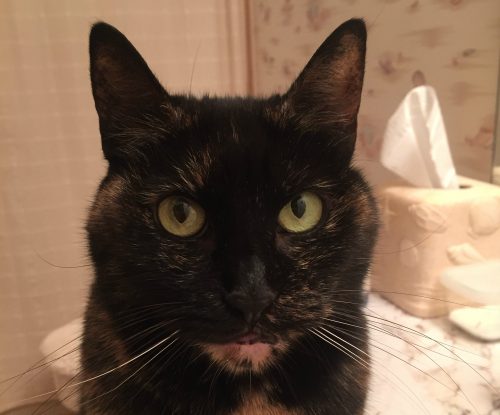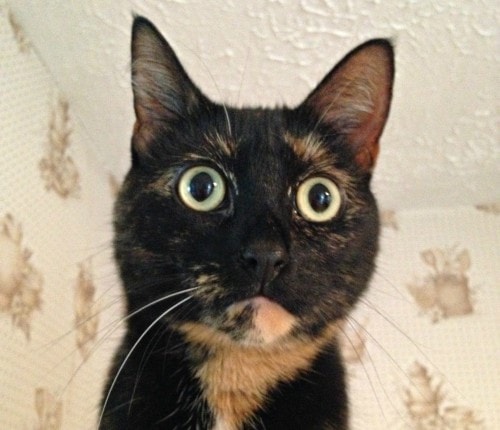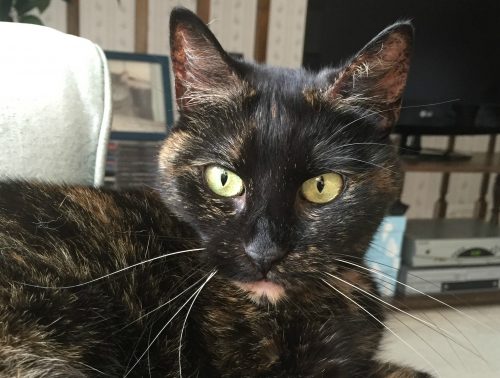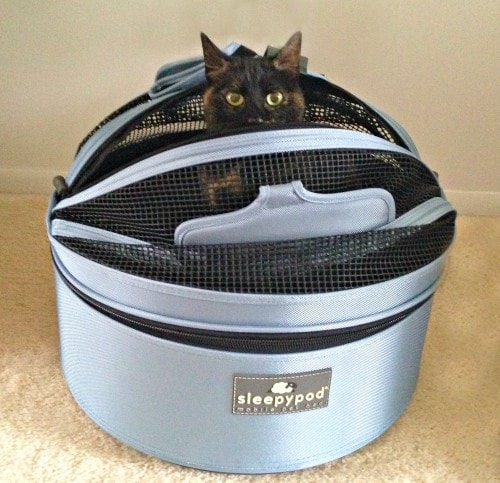
This is the second installment of our four-part series “Ruby Goes to the Dentist,” in which I share my recent experience with Ruby in hopes that it will not only put your mind at ease if you’re faced with a cat who has to have a dental procedure, but that it will also help you ensure that your cat gets the optimal level of care before, during and after her dental work.
If you’ve missed the first part in this series, please read Ruby Goes to the Dentist – Part One: Diagnosis, and Choosing a Veterinary Dentist
Preanesthetic lab work
No cat, no matter how young, should ever undergo anesthesia without preanesthetic bloodwork. Cats under seven years of age should get a CBC (complete blood count) and “mini” serum chemistry. If the cat’s FeLV/FIV status is not known, these tests should also be run. Older cats should have a CBC, complete serum chemistry, T4 and urinalysis performed.
I had Ruby’s lab work done two weeks prior to the procedure. All results were normal, and she was cleared for the procedure.
The carrier
We’ve had housecall vets since I adopted Ruby six years ago, so she has never been in a carrier except for the trip from her foster home to mine. I’ll admit that I am not very good about carrier training my cats. The carriers are always out, and sometimes, Allegra or Ruby will nap in one or the other, but I have never been willing to actually put them in a carrier and take “trial rides.” Given how easily both of them get stressed, I felt that the benefits of these “trial runs” would be far outweighed by the stress it would cause them.
I felt that the best approach with Ruby was going to be using surprise to my advantage. As with so many things with cats, sometimes, you have to adapt the rules for your own cat’s personality.
Managing anxiety – Ruby’s, Allegra’s, and my own
I was pretty anxious about the whole thing, and I had to be careful to make sure that Ruby and Allegra would not pick up on my nervousness. While I needed to spend time planning the various aspects of this process, I also knew that I couldn’t spend the month between the time I scheduled the procedure and the actual date constantly worrying about it, so I forced myself to put it out of my mind each time the worry and anxiety entered my mind. I allotted myself a 5-minute worry period once a day, but that was the only time I got to worry about it.
Preparing both cats for being separated for the day
I was also concerned about Allegra. She had never been separated from Ruby before. While the girls don’t cuddle together, they genuinely like each other and enjoy spending time in the same room together. They have their routines. Would Allegra be stressed, having the house all to herself? Would she not recognize Ruby when we returned from the clinic?
It’s an all too common scenario: when one cat returns from the vet, the cat who stayed at home greets her former friend with hisses and growls, and may even attack. Experts are not sure what causes this form of aggression. Most likely is is caused by the returning cat smelling differently. Additionally, a cat who was under anesthesia may behave differently, which may be perceived as a threat by the cat who stayed at home.
I followed Pam Johnson-Bennett’s advice for preventing this type of aggression. I took a pair of clean socks and rubbed them over Ruby to collect her regular scent. I focused especially on the areas on her cheeks to collect the pheromones. I sealed the socks in a plastic bag. On our return, I would rub Ruby’s scent all over her to help get rid of the clinic smell.
I prepared my Reiki room as Ruby’s temporary recovery room. It’s never a good idea to let a cat who is returning from a day at the vet’s (or even just a regular vet visit) back out with your other cat unless you know that the cats have been fine with it in the past. Since we had issues when Allegra returned from her dental work, I wasn’t taking any chances. My plan was to keep Ruby in the Reiki room for at least a couple of hours, possibly overnight. This would allow for some of the clinic smells on her to dissipate, and give her a chance to recover more fully from anesthesia.





That clinic smell is always a concern here with Pono when he goes to the vet (which is often). One of my cats gets the anger issue when he comes back, but the other shows concern for him.
How interesting that only one of your cats has issues with the clinic smells, and the others show concern. Just goes to show that every cat is an individual!
Thanks for sharing her story.